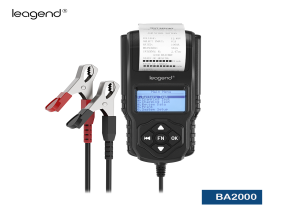Highlights
- UK retail sales register notable recovery amid renewed consumer spending
- Food stores lead the rebound with strong trading activity
- Clothing and household segments face ongoing challenges in shifting consumer sentiment
The UK retail sector, a key component of the national economy and represented by well-known companies such as Tesco (LSE:TSCO) and Marks & Spencer (LSE:MKS), continues to shape economic momentum through its diverse range of operations. As a significant category within the financial landscape, this sector encompasses a variety of goods and services—from essential food supplies to clothing, household items, and beyond. Recent data reveals that the retail environment is undergoing a period of revitalization, driven largely by an upswing in food store sales. This renewed activity provides valuable insight into consumer priorities and the evolving dynamics of market behavior following a period marked by economic uncertainty and fluctuating consumer confidence.
Retail Sales Recovery and Food Store Surge
Recent reports indicate that the retail sector has experienced a marked improvement in sales performance. A rebound in overall retail activity has been observed, with food stores showing robust performance. Supermarkets, specialty food outlets, and convenience stores have reported strong trading, which is attributed to a renewed focus on essential purchases. The surge in food store activity signals a shift in consumer spending habits, where priorities lean toward essential and readily available goods. This revitalization in food retail is notable for its scale and consistency, reflecting broader trends in consumer behavior and the adaptation of retail businesses to meet current demands.
The performance in food stores contrasts with the challenges faced by other segments of the retail market. While food sales have surged, segments such as clothing and household goods have shown signs of strain. The divergence between essential goods and discretionary spending underlines a broader reallocation of consumer priorities. In this environment, retail companies specializing in food products are emerging as the strength of the sector, benefiting from a focus on everyday essentials and a stable demand pattern.
Challenges in Clothing and Household Goods
In contrast to the strong performance seen in food retail, clothing and household goods sectors have encountered difficulties. These segments have been affected by a subdued consumer sentiment that has hampered discretionary spending. Various factors contribute to these challenges, including ongoing economic uncertainties and cautious consumer behavior. The retail environment for non-essential items continues to be influenced by shifts in consumer mood, where the focus has shifted toward necessities. This change in purchasing behavior underscores the importance of resilience and adaptability within the retail landscape, as businesses navigate the tension between essential needs and luxury spending.
Retail companies operating in the clothing and household categories are responding by re-evaluating their product offerings and marketing strategies. The pressure to adapt to evolving consumer preferences is prompting a strategic realignment in these segments. Businesses are exploring new approaches to enhance the appeal of their product lines and streamline operations to address the shifting landscape. Although these segments face headwinds, the broader recovery in retail sales provides a counterbalance, illustrating the complex interplay of factors that drive market performance.
Economic Context and Consumer Behavior
The retail sector's recent performance is set against a backdrop of broader economic challenges that have influenced consumer behavior. Uncertainties in the job market, inflationary pressures, and varying economic signals have all played a role in shaping spending patterns. Despite these challenges, the revival in food store sales indicates that consumers are prioritizing essential purchases. This trend reflects a cautious but steady shift in consumer habits, where the need for daily necessities outweighs other spending categories.
Consumer confidence, while still influenced by external economic factors, has shown signs of improvement. Increased activity in food retail has bolstered sentiment among shoppers, reinforcing the notion that the market is on a path to recovery. This shift in consumer behavior is significant because it signals a broader realignment in spending priorities. By focusing on essential items, the retail sector demonstrates its ability to adapt to changing economic conditions and maintain relevance even in challenging times.
Market Adaptations and Strategic Adjustments
Retail businesses have taken proactive steps to align with evolving consumer demands. Many companies have restructured their operations to emphasize efficiency, customer service, and the quality of essential product offerings. Supermarkets and food retailers, in particular, have invested in modernizing supply chains and enhancing the in-store experience. These adaptations not only support strong sales in the food segment but also serve as a model for other retail categories seeking to regain momentum.
In response to changing consumer preferences, some retailers have diversified their product lines to include a broader range of essential goods. This strategic shift is aimed at capitalizing on the growing demand for everyday products while addressing the challenges faced in more discretionary segments. By focusing on operational efficiency and customer-centric initiatives, retail companies are positioning themselves to navigate the complexities of the current economic environment. This approach highlights the importance of agility and the capacity to adjust to rapidly changing market conditions.
The Role of Digital Transformation
Digital channels continue to play an increasingly important role in shaping retail dynamics. The integration of online platforms and e-commerce solutions has provided retailers with new avenues for reaching consumers. Online food delivery services and digital ordering systems have become particularly significant, as they offer convenience and flexibility to shoppers. The digital transformation of retail is fostering a more resilient and adaptive market, where technology bridges the gap between supply and demand.
Retailers have leveraged digital tools to enhance operational efficiency, streamline logistics, and improve customer engagement. The rise in digital sales channels complements the strong performance of physical stores, creating a hybrid model that serves the evolving needs of consumers. As digital adoption grows, retailers are finding innovative ways to integrate technology into their core operations, ensuring that the retail sector remains dynamic and responsive to market trends.
Implications for the Broader Economy
The resurgence in retail sales, driven primarily by food stores, has broader implications for the UK economy. As a critical indicator of consumer spending power, retail performance serves as a barometer for economic health. The strong performance in the food segment reinforces the notion that essential consumption remains a cornerstone of economic activity. This rebound not only benefits retailers but also supports the overall economic framework by promoting stability in consumer markets.
The recovery in retail sales contributes to increased confidence among businesses and policymakers alike. A vibrant retail sector can stimulate other areas of the economy, from supply chain networks to employment and public services. By demonstrating resilience in the face of economic challenges, the retail sector sets a positive tone for future growth and stability. The dynamics observed in food store sales, in particular, highlight the sector’s ability to drive economic momentum and foster a more balanced market environment.
Future Prospects and Strategic Focus
The evolution of the UK retail sector continues to unfold amid a complex economic landscape. While essential segments such as food stores are leading the recovery, other categories remain under pressure. This divergence underscores the need for strategic focus and operational refinement across the sector. Retail companies are encouraged to streamline operations, enhance customer experiences, and leverage digital advancements to sustain the current momentum.
The adaptability of retail businesses to shifting consumer priorities will play a crucial role in determining long-term performance. A focus on core essentials, supported by modernized supply chains and innovative digital solutions, positions the sector for sustained success. As the market evolves, the interplay between essential and discretionary segments will shape the trajectory of retail sales and contribute to the overall stability of the economy.
The current phase in the retail sector presents a multifaceted narrative, where strong performance in food stores serves as a catalyst for broader economic recovery. By embracing digital transformation, refining operational strategies, and responding to evolving consumer behavior, the retail industry is navigating a path toward renewed vitality. This period of resurgence highlights the sector’s capacity to drive economic progress and underscores the critical role of retail in supporting a vibrant and resilient market environment.


